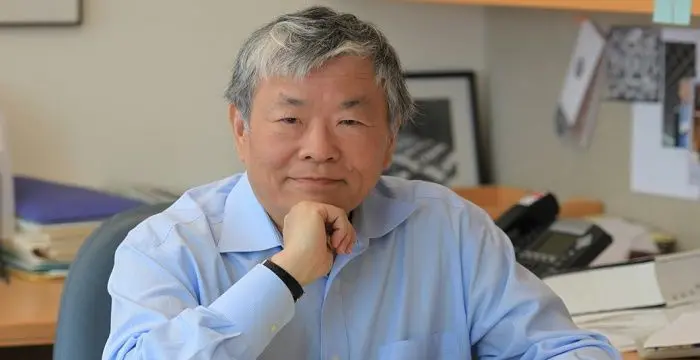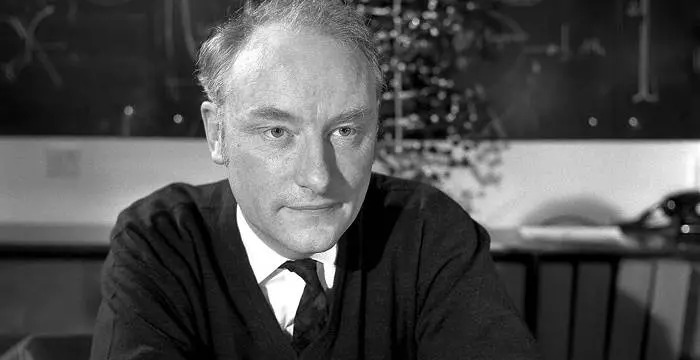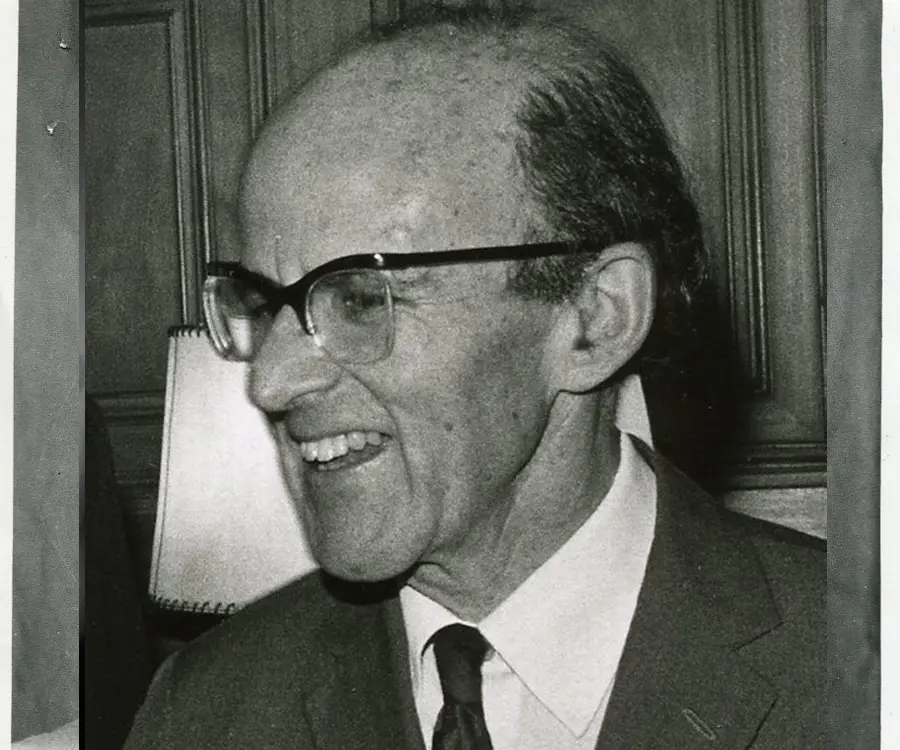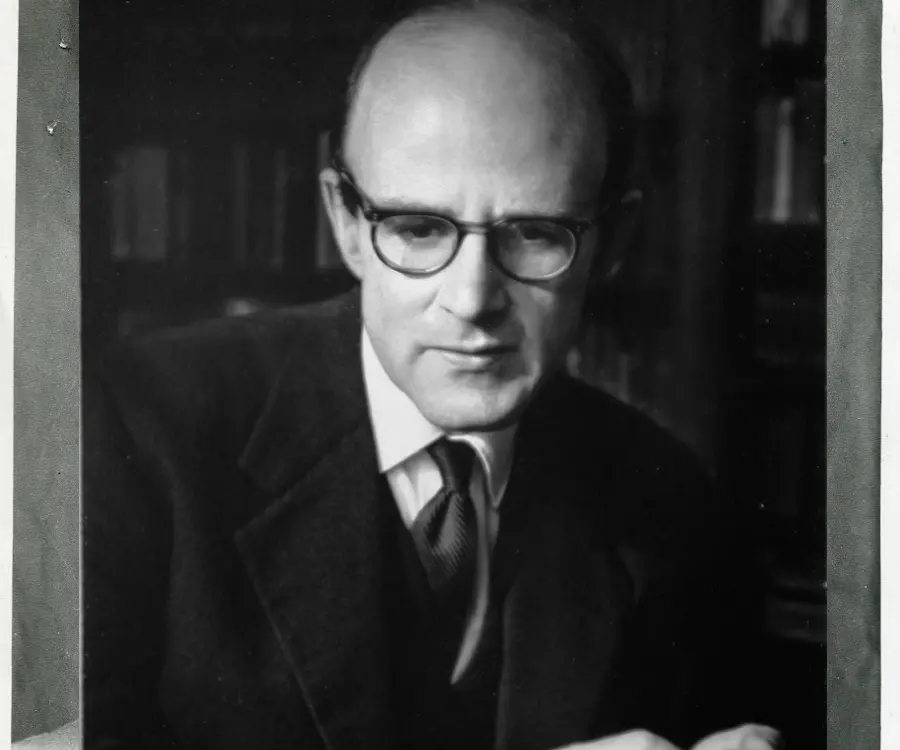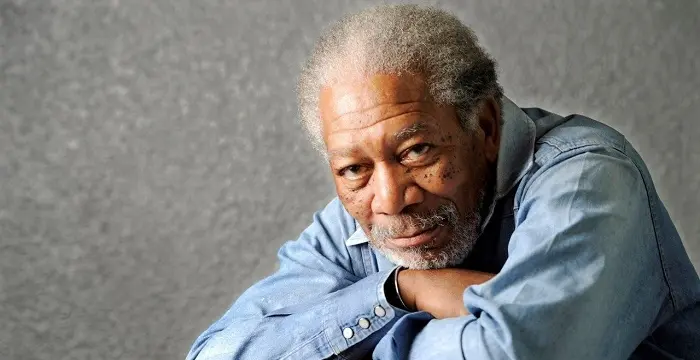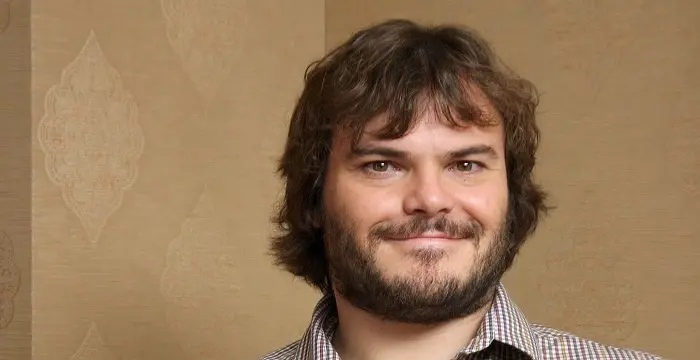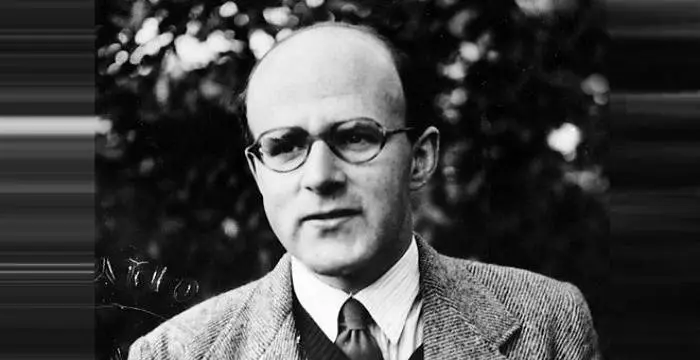
Max Perutz - Molecular Biologists, Family and Childhood
Max Perutz's Personal Details
Max Ferdinand Perutz was an Austrian-born British molecular biologist who was awarded the ‘Nobel Prize for Chemistry’ in 1962
| Information | Detail |
|---|---|
| Birthday | May 19, 1914 |
| Died on | February 6, 2002 |
| Nationality | British |
| Famous | Atheists, Scientists, Molecular Biologists |
| Spouses | Gisela Clara Mathilde Peiser |
| Known as | Max Ferdinand Perutz |
| Childrens | Robin |
| Universities |
|
| Birth Place | Vienna, Austria-Hungary |
| Religion | Atheist |
| Gender | Male |
| Father | Hugo Perutz |
| Mother | Adele |
| Sun Sign | Taurus |
| Born in | Vienna, Austria-Hungary |
| Famous as | Molecular Biologist |
| Died at Age | 87 |
// Famous Molecular Biologists
Susumu Tonegawa
Susumu Tonegawa is a Japanese molecular biologist who was awarded the Nobel Prize for Physiology or Medicine in 1987. This biography of Susumu Tonegawa provides detailed information about his childhood, life, achievements, works & timeline.
James Watson
James Watson is an American molecular biologist and geneticist who played a crucial role in the discovery of the molecular structure of D.N.A. This biography provides detailed information about his childhood, life, achievements, works & timeline
Francis Crick
Francis Crick was an English molecular biologist, biophysicist and neuroscientist, who received the Nobel Prize for Medicine. This biography profiles his childhood, life, career, achievements and timeline.
Max Perutz's photo
Who is Max Perutz?
Max Ferdinand Perutz was an Austrian-born British molecular biologist who was awarded the ‘Nobel Prize for Chemistry’ in 1962, jointly with English biochemist John Kendrew, for his investigation on the structure of haemoglobin, the iron containing metalloprotein present in the red blood cells. He applied the most powerful device X-ray crystallography to analyse the structure of haemoglobin that carries oxygen from lungs to the tissues of body through blood cells and returns carbon dioxide back to the lungs. He also researched on the flow of glaciers and made a crystallographic analysis of the way snow transforms into glacial ice. He measured the velocity distribution of a glacier and validated that it is in the surface where the fastest flow occurs, while the slowest one occurs towards the bed of the glacier. He founded and became the first chairman of the research institute; ‘Medical Research Council Laboratory of Molecular Biology’ in Cambridge that eventually produced fourteen Nobel laureates. He received several awards including the ‘Royal Medal’ (1971) and the ‘Copley Medal’ (1979) from the ‘Royal Society’ of London. He was conferred several honours and distinctions that included ‘Fellow of the Royal Society’ (FRS) in 1954; ‘Commander of the Order of the British Empire’ in 1963; and ‘Order of Merit’ in 1988.
// Famous Scientists
Juliane Koepcke
Juliane Koepcke is a German-Peruvian biologist, who was the lone survivor among the 92 passengers and crew of the ill-fated LANSA Flight 508 that crashed in the Peruvian rainforest on 24 December 1971. Know more about her life in this biography.
Henry Cavendish
Henry Cavendish was a theoretical chemist and physicist, renowned for discovery of hydrogen and calculation of the mass of earth. To know more about his childhood, profile, timeline and career read on
Konstantin Tsiolkovsky
Konstantin Tsiolkovsky was a Russian rocket scientist and a pioneer of astronautics. This biography provides detailed information about his childhood, family, personal life, career, achievements, etc.
Childhood & Early Life
He was born on May 19, 1914, in Vienna, Austria, in a Jewish family to Hugo Perutz and his wife Adele "Dely" Goldschmidt. His father hailed from a family of textile manufacturers who introduced mechanical spinning and weaving to the monarchy of Austria.
Perutz was baptized in the Catholic religion. He studied at ‘Theresianum’ in Vienna, a public boarding school founded by Empress Maria Theresia. Though his parents wanted him to pursue law, being inspired by one of his school teachers he developed interest in chemistry.
After convincing his parents of his choice, he joined ‘University of Vienna’ to study chemistry and obtained his graduation degree in 1936.
Becoming aware of the developments being made by English biochemist Gowland Hopkins at the ‘University of Cambridge’, he requested Professor Hermann Marks, who was about to visit Cambridge, to see if Hopkins would be interested to induct him. However Professor Marks forgot the matter but helped him to join English scientist J.D. Bernal as a research student in the latter’s investigation of X-ray crystallography.
He was inducted in research group of Bernal at ‘Cavendish Laboratory’ in Cambridge and although initially he faced challenges with the new subject of crystallography, he picked it up quickly. He received financial support of ₤500 from his father.
He was inspired by Bernal to apply the procedure of X-ray diffraction to examine structure of proteins. Since it was not easy to obtain protein crystals, he arranged for haemoglobin crystals of horses and initiated his postgraduate doctoral dissertation on its structure.
Career
As Adolf Hitler captured Austria in 1938, his parents fled to Switzerland and lost all their money which resulted in Perutz losing financial support. However his knowledge about crystals and skill of mountaineering and skiing helped him join a team of three men in the summer of 1938 to investigate transformation of snow into ice in the Swiss glaciers. His article for the ‘Proceedings of the Royal Society’ established his proficiency about glaciers.
British physicist and X-ray crystallographer Sir William Lawrence Bragg, who at that time served as head of Experimental Physics at Cavendish saw prospect in Perutz's investigation into hemoglobin and inspired Perutz to apply for a ‘Rockefeller Foundation’ grant to continue with his research. Upon receiving the grant on January 1, 1939, Perutz using the money brought his parents to England in March that year.
At the outbreak of the ‘Second World War’ Winston Churchill ordered people of Austrian and German background including Perutz to be sent to Newfoundland. He came back to Cambridge after several months of detainment.
He earned his PhD in 1940 from the ‘University of Cambridge’ under the guidance of Bragg.
His reputation as an expert on glaciers led him to be inducted in 1942 for the ‘Project Habakkuk’, a secret project of the British to build an aircraft carrier with pykrete – a mix of ice and wood pulp, to confront German U-boats in mid-Atlantic. He conducted his initial research on pykrete in a secret place underneath London’s ‘Smithfield Meat Market’.
In 1947 Professor Bragg helped him in obtaining financial support from ‘Medical Research Council’ (MRC) with which he set up the Molecular Biology Unit at the ‘Cavendish Laboratory’. He became head of the unit in October that year and later in March 1962 he was inducted as Chairman of the ‘Medical Research Council Laboratory of Molecular Biology’, a position he held till 1979. Seeing prospect in the field of molecular biology many researchers like Francis Crick and James D. Watson, who went on to become Nobel Laureates, joined the new unit.
In 1953 he displayed that it was possible to phase diffracted X-rays from protein crystals by analysing the arrangements from crystals of protein in the presence and absence of attachment of heavy atoms. He applied this procedure in 1959 to ascertain molecular structure of haemoglobin.
Post 1959, he along with his collaborators researched extensively to ascertain the structure of oxy- haemoglobin and deoxy- haemoglobin and in 1970 suggested the way it functions.
Moving on he examined several haemoglobin diseases, their structural alterations and effect on oxygen binding. Perutz expected that it would be possible to make the molecule work as a drug receptor and probably this would restrict or reverse the genetic flaws like the ones that happen in sickle cell anaemia.
He also delved into studying variance of haemoglobin molecule in different species to adopt different habitats.
During the later years of his work he researched on structural alterations in proteins involved in neurodegenerative diseases such as the Huntington disease. He displayed that the inception of the Huntington disease is associated with the number of glutamine repeats that bind to form a ‘polar zipper’, as termed by him.
His later years saw him contributing to the ‘New York Review of Books’ and the ‘London Review of Books’. He wrote several books of which ‘Is Science Necessary?’ (1989) and ‘I Wish I’d Made You Angry Earlier’ (1998) are compilation of his essays, both of which were edited by Perutz himself. He received ‘Lewis Thomas Prize’ of the ‘Rockefeller University’ in 1997, an annual literary award that "recognizes scientists as poets".
Awards & Achievements
In 1962 he was jointly awarded the ‘Nobel Prize for Chemistry’ along with English biochemist John Kendrew.
Personal Life & Legacy
He married Gisela Clara Mathilde Peiser, a medical photographer, in 1942. She was a Protestant.
Their daughter, Vivien was born in 1944 while son, Robin, was born in 1949. He serves the ‘University of York’ as Professor of Organic Chemistry, where he was also the head of department. Robin became a ‘Fellow of the Royal Society’ in 2010.
During the later stage of his life Perutz became an atheist although respected others’ religious beliefs.
On February 6, 2002, he succumbed to cancer and on February 12 his cremation was performed at the ‘Cambridge Crematorium’ (Cambridgeshire) following which his remains were buried in the ‘Parish of the Ascension Burial Ground’ in Cambridge besides that of his parents.
// Famous Atheists
Morgan Freeman
Morgan Freeman is an Academy Award winning actor known for his work in movies like ‘Street Smart’, ‘Driving Miss Daisy’ and ‘Million Dollar Baby’. This biography provides detailed information about his childhood, life, achievements, works & timeline.
Robert Smith
Robert Smith is an English musician and the lead singer of the British rock band, ‘The Cure.’ This biography of Robert Smith gives detailed information on his profile, childhood, life and timeline.
Jack Black
Jack Black is a renowned American actor-producer and voice artist. Explore this biography to learn more about his profile, childhood, career and timeline
Max Perutz's awards
| Year | Name | Award |
|---|---|---|
Other | ||
| 0 | Nobel Prize for Chemistry (1962) | |
| 0 | Wilhelm Exner Medal (1967) | |
| 0 | Royal Medal (1971) | |
| 0 | Copley Medal (1979) | |
Max Perutz biography timelines
- // 19th May 1914He was born on May 19, 1914, in Vienna, Austria, in a Jewish family to Hugo Perutz and his wife Adele "Dely" Goldschmidt. His father hailed from a family of textile manufacturers who introduced mechanical spinning and weaving to the monarchy of Austria.
- // 1936After convincing his parents of his choice, he joined ‘University of Vienna’ to study chemistry and obtained his graduation degree in 1936.
- // 1938As Adolf Hitler captured Austria in 1938, his parents fled to Switzerland and lost all their money which resulted in Perutz losing financial support. However his knowledge about crystals and skill of mountaineering and skiing helped him join a team of three men in the summer of 1938 to investigate transformation of snow into ice in the Swiss glaciers. His article for the ‘Proceedings of the Royal Society’ established his proficiency about glaciers.
- // 1st Jan 1939British physicist and X-ray crystallographer Sir William Lawrence Bragg, who at that time served as head of Experimental Physics at Cavendish saw prospect in Perutz's investigation into hemoglobin and inspired Perutz to apply for a ‘Rockefeller Foundation’ grant to continue with his research. Upon receiving the grant on January 1, 1939, Perutz using the money brought his parents to England in March that year.
- // 1940He earned his PhD in 1940 from the ‘University of Cambridge’ under the guidance of Bragg.
- // 1942His reputation as an expert on glaciers led him to be inducted in 1942 for the ‘Project Habakkuk’, a secret project of the British to build an aircraft carrier with pykrete – a mix of ice and wood pulp, to confront German U-boats in mid-Atlantic. He conducted his initial research on pykrete in a secret place underneath London’s ‘Smithfield Meat Market’.
- // 1942He married Gisela Clara Mathilde Peiser, a medical photographer, in 1942. She was a Protestant.
- // 1953 To 1959In 1953 he displayed that it was possible to phase diffracted X-rays from protein crystals by analysing the arrangements from crystals of protein in the presence and absence of attachment of heavy atoms. He applied this procedure in 1959 to ascertain molecular structure of haemoglobin.
- // 1959 To 1970Post 1959, he along with his collaborators researched extensively to ascertain the structure of oxy- haemoglobin and deoxy- haemoglobin and in 1970 suggested the way it functions.
- // 1962In 1962 he was jointly awarded the ‘Nobel Prize for Chemistry’ along with English biochemist John Kendrew.
- // 6th Feb 2002On February 6, 2002, he succumbed to cancer and on February 12 his cremation was performed at the ‘Cambridge Crematorium’ (Cambridgeshire) following which his remains were buried in the ‘Parish of the Ascension Burial Ground’ in Cambridge besides that of his parents.
// Famous Taurus Celebrities peoples
Jason Simpson
Jason Simpson is the son of former NFL running back, broadcaster and actor O. J. Simpson. Check out this biography to know about his childhood, family, life, and little known facts about him.
Sophie Reade
Sophie Victoria Reade is a British model and reality show star. Let’s take a look at her family and personal life, including her age, birthday, boyfriends, and some interesting facts.
ASMR Aspen
ASMR Aspen is an American YouTuber. Check out this biography to know about her birthday, childhood, family life, achievements and fun facts about her.
Bertil Gotthard Ohlin
Bertil Gotthard Ohlin was a famous Swedish economist. This biography profiles his childhood, family life & achievements.
Josh Temple
Check out all that you wanted to know about Josh Temple (Slogoman), the famous British YouTube Personality; his birthday, his family and personal life, his girlfriends, fun trivia facts and more.
Aidan Prince
Aidan Prince is an American dancer, actor and vlogger. Let’s have a look at his family and personal life including age, date of birth, net worth, and fun facts.
Max Perutz's FAQ
What is Max Perutz birthday?
Max Perutz was born at 1914-05-19
When was Max Perutz died?
Max Perutz was died at 2002-02-06
Where was Max Perutz died?
Max Perutz was died in Cambridge, Cambridgeshire, England
Which age was Max Perutz died?
Max Perutz was died at age 87
Where is Max Perutz's birth place?
Max Perutz was born in Vienna, Austria-Hungary
What is Max Perutz nationalities?
Max Perutz's nationalities is British
Who is Max Perutz spouses?
Max Perutz's spouses is Gisela Clara Mathilde Peiser
Who is Max Perutz childrens?
Max Perutz's childrens is Robin
What was Max Perutz universities?
Max Perutz studied at University of Cambridge, Laboratory of Molecular Biology
What is Max Perutz's religion?
Max Perutz's religion is Atheist
Who is Max Perutz's father?
Max Perutz's father is Hugo Perutz
Who is Max Perutz's mother?
Max Perutz's mother is Adele
What is Max Perutz's sun sign?
Max Perutz is Taurus
How famous is Max Perutz?
Max Perutz is famouse as Molecular Biologist
